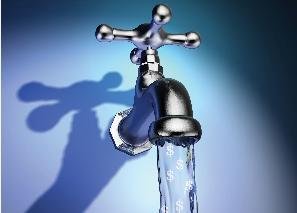Addressing the challenge of delivering safe drinking water to the developing world would be a major step forward in reducing the incidence of disease and increasing life span. In recent years, a growing number of innovative solutions have been fielded in an attempt to directly solve this problem; in fact H2Bid has featured many of these solutions as a part of this regular column. The devices range from mechanical to chemical in design with the common thread being the inventors striving to keep their solutions simple and easy to operate. Joining these solutions is perhaps the simplest yet: SODIS or Solar Water Disinfection.
Solar Water Disinfection relies on two natural properties of sunlight: Infrared (IR) radiation in the form of heat and ultraviolet (UV) radiation. The IR radiation heats the water, ideally to a temperature of around 50°C (~120°F) – about the temperature of a hot shower. The UV radiation works in two ways to sanitize the water; the UV radiation energizes the dissolved oxygen in the water and creates highly-reactive forms of oxygen. These oxidizing molecules interfere with the metabolism of bacteria and attack the DNA of all living creatures, including microscopic ones. Additionally, the UV radiation, itself, attacks the DNA of these microorganisms directly. When the UV and heat are combined in the SODIS process, the effects are compounded; higher temperatures allow the DNA breakdown to happen more quickly. The result means death to any microorganism that happened to be living in the water. Once removed from the sun, the effects quickly dissipate and no threat to humans remains from either the heat or the UV rays.
To use the SODIS method, one needs only to have low-turbidity water, a PET bottle and a place where the bottle can get direct sunlight. The developers of the method suggest PET for several reasons. First and foremost, PET will not “leech†into the water and create secondary health issues. Furthermore, PET bottles are virtually everywhere on the planet making them easy to obtain. Lastly, PET is a tough material making it difficult to break or tear. The SODIS website also suggests safe ways to use glass and other materials when PET is not available.
Without treatment, the microorganisms that can be present in water pose a health risk to humans. It has been known for some time that UV radiation, with or without heat, is effective in sterilizing or destroying viruses and bacteria. Recently, it has been determined that UV radiation is also effective in destroying larger, more protected organisms like Giardia and Cryptosporidium. As previously mentioned, when the UV radiation is combined with heat, the effects are magnified. Studies indicate that raising the temperature of water by as little as 25°C – to 50°C – will cut down the time to sterilize water by a factor of three. In the case of SODIS, the estimated time to sterilize a bottle of water on a partly-cloudy day is about six hours.
SODIS is ideal for the lower latitudes where the sun’s rays are the most direct. It is also in these regions that some of the greatest challenges of providing safe drinking water exist; this makes the SODIS method a perfect fit. Worldwide over 3 million people get some or all of their drinking water via the SODIS method. Currently SODIS projects are underway in 24 countries with focus areas in Latin America, Asis, Africa and Oceania.
One such project is in Peru; the SODIS Foundation has been working there since 2003. Currently, over 100,000 people in Peru use SODIS to disinfect their drinking water. As part of the program, the SODIS foundation has teamed with ADRA (a major NGO) to scale-up from a small pilot program in the Andes into the current operation. In addition to clean drinking water, the partners have offered other innovative solutions to the Peruvians including solar hot water showers and solar ovens. Both of these have reduced the local dependence on firewood and improved indoor air quality. This team approach, with broad standard of living goals is typical of the SODIS Foundation’s programs.
In related news, the City of New York has recently approved a 2-billion gallon per day drinking water disinfection facility that will rely heavily upon UV radiation. While this is not SODIS, per se, it is an endorsement of the concept. So far, SODIS appears safe, effective and inexpensive – three factors that may make it a powerful ally in delivering clean drinking water to the world. To learn more about SODIS and to find out how you can help, browse to http://www.sodis.ch/index

